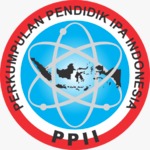Pengembangan Model Neuron Berbasis Konduktansi untuk Deteksi Penyakit Parkinson
DOI:
https://doi.org/10.29408/kpj.v7i3.23954Keywords:
Deep Brain Stimulation (DBS), ganglia basal, Subthalamic Nukleus (STN), penyakit parkinsonAbstract
Penyakit parkinson merupakan salah satu penyakit yang mengalami gangguan neurodegeneratif. Gangguan tersebut merupakan suatu kondisi patologis sel saraf di mana sel saraf akan terus kehilangan struktur atau fungsinya. Menghadapi semakin banyaknya penderita penyakit parkinson dan jumlah ahli yang sedikit, maka diperlukan suatu metode yaitu sistem yang profesional untuk mendukung pendeteksian awal pada penyakit tersebut. Pada penelitian ini, model direpresentasikan sebagai persamaan diferensial biasa yang digabungkan sehingga dapat menggambarkan tegangan aktifitas pada neuron Subtalamic Nuckleus (STN). Penelitian ini bertujuan untuk membandingkan hasil simulasi menggunakan model dasar Hodgin-Huxley (HH) dengan penambahan arus tambahan untuk mendeteksi adanya penyakit parkinson. Perhitungan model simulasi dilakukan dengan menggunakan metode Runge-Kutta orde keempat. Hasil simulasi deteksi menunjukkan bahwa efek dari penambahan arus sinaptik dan arus stimulasi otak dalam secara signifikan terdapat tegangan respons yang berbeda dengan model asli persamaan HH pada aktifitas neuron. Hal ini disebabkan oleh reseptor terletak pada neuron glutamatergik, sehingga neuron-neuron ini akan dihambat oleh peningkatan aktivitas arus sinaptik dan stimulasi otak dalamReferences
Bar-Gad I, Elias S, Vaadia E, Bergman H. 2004. Complex locking rather than complete cessation of neuronal activity in the globus pallidus of a 1-methyl- 4-phenyl-1, 2, 3, 6-tetrahydropyridine-treated primate in response to pallidal microstimulation. J Neurosci 24:7410–7419
Benabid A L, Chabardes S, Mitrofanis J and Pollak P. 2009. Deep brain stimulation of the subthalamic nucleus for the treatment of Parkinson’s disease Lancet Neurol. 8 67–81
Carvalho N. A., Contassot-Vivier S., Buhry L., Martinez D. 2020. Simulation of Large Scale Neural Models With Event-Driven Connectivity Generation. Frontiers in Neuroinformatics. 14:522000. doi: 10.3389/fninf.2020.522000
Fleming J. E., Dunn E., Lowery M. M. 2020. Simulation of Closed-Loop Deep Brain Stimulation Control Schemes for Suppression of Pathological Beta Oscillations in Parkinson’s Disease. Frontiers in Neuroinformatics. 14:166. doi: 10.3389/fnins.2020.00166
Hutchison W, Dostrovsky J, Walters J, Courtemanche R, Boraud T, Goldberg J, Brown P. 2004. Neuronal oscillations in the basal ganglia and movement disorders: evidence from whole animal and human recordings. J Neurosc 24:9240–9243
Ishihara L S, Cheesbrough A, Brayne C and Schrag A. 2007. Estimated life expectancy of Parkinson’s patients compared with the UK population J. Neurol. Neurosurg. Psychiatry 78 1304–9
Jankovic J. 2008. Parkinson’s disease: clinical features and diagnosis J. Neurol.Neurosurg. Psychiatry 79 368–76
Joundi R, Jenkinson N, Brittain JS, Aziz TZ, Brown P. 2012. Driving oscillatory activity in the human cortex enhances motor performance. Curr Biol 22:403– 7. DOI: 10.1016/j.cub.2012.01.024
Kalia L V, Kalia S K and Lang A E. 2015. Disease-modifying strategies for Parkinson’s disease Mov. Disord. 30 1442–50
Magrinelli F, Picelli A, Tocco P, Federico A, Roncari L, Smania N, Zanette G and Tamburin S. 2016. Pathophysiology of motor dysfunction in Parkinson’s disease as the rationale for drug treatment and rehabilitation Parkinsons Dis. 2016.18
Merrison-Hort R, Yousif N, Andrea F, Borisyuk R. 2017. Oscillatory Neural Models of the Basal Ganglia for Action Selection in Healthy and Parkinsonian Cases. Springer. doi 10.1007/978-3-319-49959-8_7
Mitrofanis J. 2019. Exploring exercise and photobiomodulation in Parkinson’s Desease. IOP Concise Physics. 114.122.69.47. doi:10.1088/2053- 2571/ab2f70ch1
Poewe W, Seppi K, Tanner C M, Halliday G M, Brundin P, Volkmann J, Schrag A-E and Lang A E. 2017. Parkinson disease Nat. Rev. Dis. Primers 3.17013 Santaniello, S., Gale, J. T., Sarma, S. V. 2018. Systems approaches to optimizing deep brain stimulation therapies in Parkinson’s disease. WIREs Systems Biology and Medicine, 10, e1421
Tass P, Majtanik M. 2006. Long-term anti-kindling effects of desynchronizing brain stimulation: a theoretical study. Biological Cybernetics 94:58–66
Yousif N, Liu X. 2009. Investigating the depth electrode–brain interface in deep brain stimulation using finite element models with graded complexity in structure and solution. J Neurosci Methods 184:142–151









